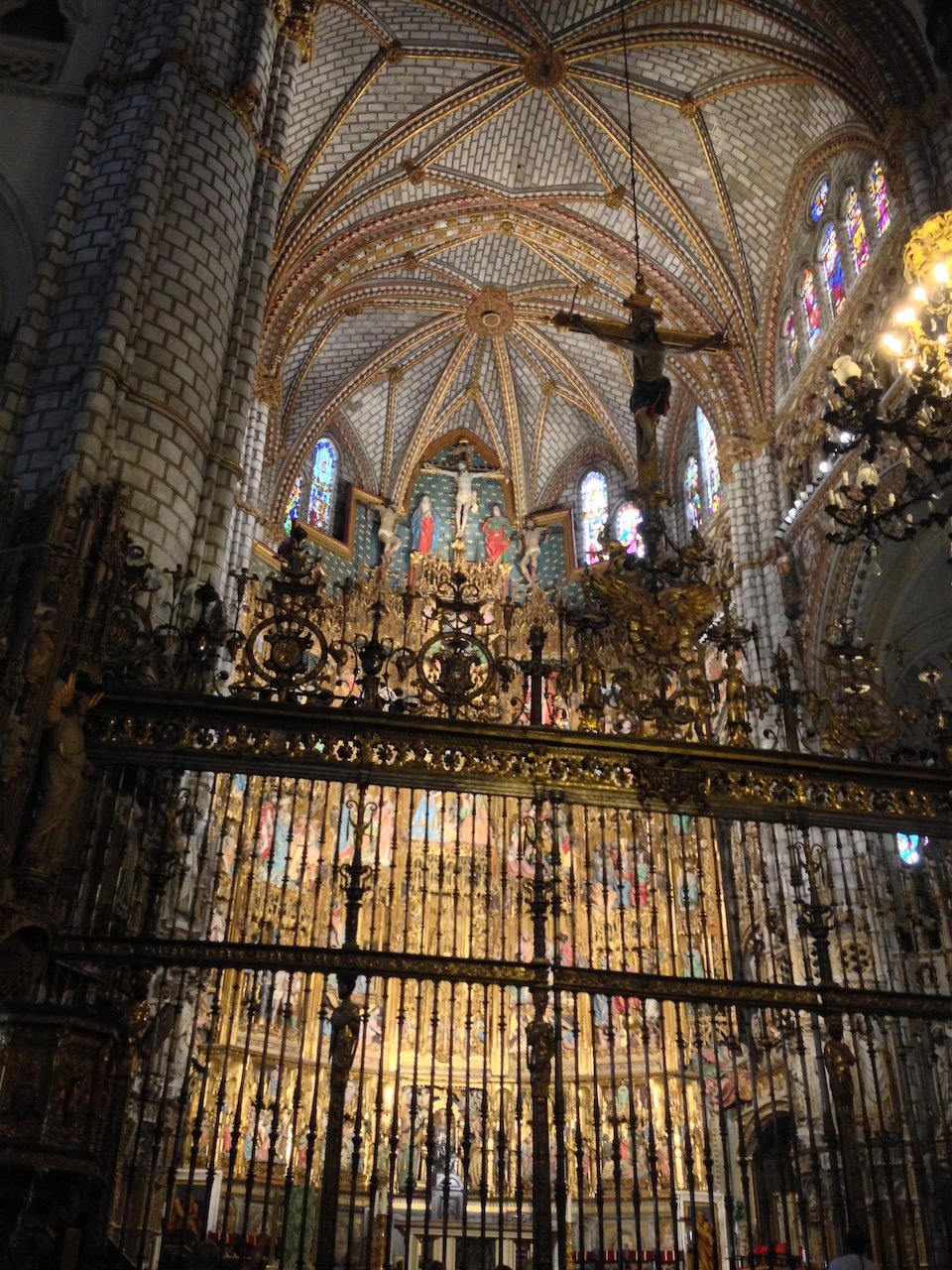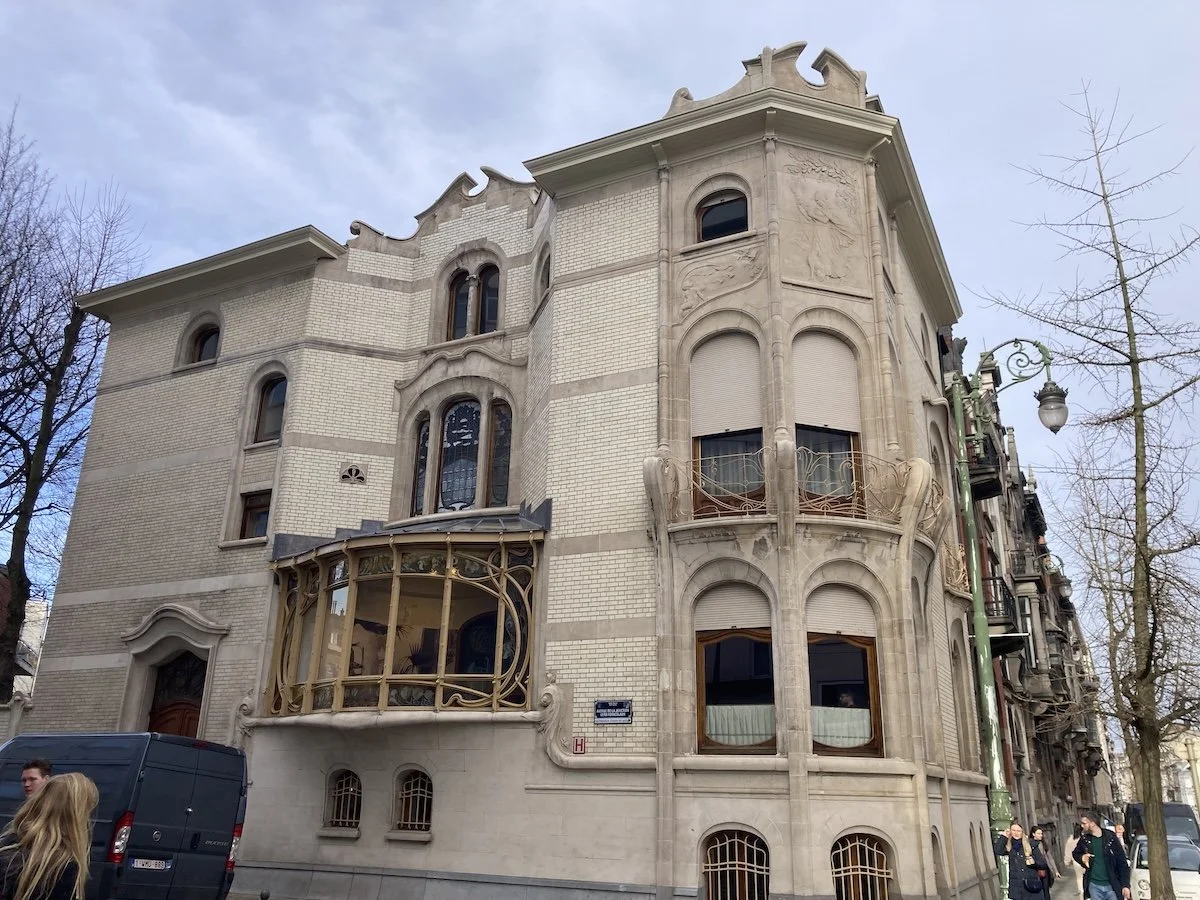Toledo deserves a week
Exasperated inhabitants of Amsterdam, Barcelona, Prague and Venice have been very vocal recently about the damages caused by mass tourism. But they are not the only city dwellers suffering: young Spaniards from Toledo, a city that has nestled in a meander of the Tagus, 70 km west of Madrid for nearly 2,000 years, are fleeing the old town because, they say, “it’s just become an open-air museum.”
The problem lies with the city’s proximity to the Spanish capital because the vast majority of tourists come only for short day-trips. They arrive by bus equipped with sandwiches and drinks so their only purchases in Toledo are “made in China” tourist tat which abound in the steep, narrow streets. These “made for tourist” shops have replaced the grocery stores, butchers, bakers, etc. which an inhabitant needs. So the young people prefer to settle on the opposite bank of the Tagus in the new town, abandoning the historic city centre, a UNESCO world heritage site, to the elderly.
We rented an apartment there for a week in July whilst the owners were on holiday. The first morning, whilst the others were asleep, I thought I’d slip out to buy food for breakfast. This, I assumed would be quick and easy because our accommodation was right in the city centre. Well, not at all! At 7 a.m., the coolest hour in 24, everything was closed because it was too early for tourists. And then, just as I was on my way home empty-handed, wondering what we would have for breakfast, I spied a tiny, open shop that sold a little bit of everything.
That morning the young owner had a stock of gigantic watermelons that he’d placed on the floor. We struck up a conversation, which continued over the following days as it turned out his was almost the only food shop in the historic city centre (apart from a small supermarket). I learned that he’d only opened recently after arduous discussions with the city authorities who wanted him to open yet another tourist tat shop and not a food business because that “doesn't interest tourists”.
“The old town is dying. Soon it will just be an open-air museum,” he lamented. According to him “it will be difficult to draw young people back because they prefer a small house with a garden for the children instead of an apartment in the streets of the old town”. However, shady apartments are welcome when the temperature is close to 45ºC! “But at least if tourists came to spend a few days with us instead of just these short day-trips, it would allow other businesses to open and prosper and then the traders would perhaps live here, so the city would revive,” he remarked.
Now why people only come here for half a day is a mystery to me because there’s enough to see to keep a visitor busy for at least a week.
Toletum, as Romans called it, became the capital of Hispania in the VIth century and 10 centuries later the capital of the Spanish Empire. It owes its "city of three cultures" nickname to the arrival of the Arabs in the VIIIth century who lived there peacefully with the Christians and Jews who were already present. As a result, Toledo is full of churches, convents and monasteries, mosques and synagogues.
The best way to get to know this red and ochre tinted city is to put away your map (and your phone!) and simply wander around, taking the time to observe and look up: here, a centuries-old studded wooden door adorned by a knocker in the shape of a ringed hand; there, superb wrought iron weather-vanes; here and there on the walls marks which we were later told date from the Middle Ages to mark the death of someone who had no right to a religious burial.
To avoid the crowds in the utterly spectacular Santa Maria Cathedral, we attended the Mozarabic mass at 9 a.m. which has been sung in Latin every day since 1504 in the Corpus Christi chapel, the only one in the world dedicated to this rite. The advantage is that entry is free and as the cathedral only opens to the public at 10 a.m. you have it almost entirely to yourself for a while! And what a sight it is!
The flamboyant Gothic style altarpiece, sculpted between 1497 and 1504, tells the story of Christ in an extremely legible manner. I wished I’d come equipped with binoculars or a more powerful zoom lens to really enjoy the lively expressions and fresh colours of the characters. The scene of the Ascension is priceless: of the Blessed Virgin we see only her feet and the hem of her dress disappearing into a cloud! This is also the only church I’ve ever been in, and believe me I’ve been in a few, where I’ve seen something so totally unexpected that my jaw literally dropped: walking around behind this altarpiece, not expecting to see anything but the plain back of it, I was stopped in my tracks by an arresting sight: illuminated by a large skylight pierced high in the wall opposite that illuminates it like a spotlight, there is a second altarpiece, El Transparente, a majestic Baroque work. In any other church this would be the principal treasure. Here it is hidden away behind the main altar.
And that’s not all. Because, of course, Toledo was home to the artist Doménikos Theotokópoulos, better known as El Greco, who arrived here in July 1577 and stayed until his death in 1614. The sacristy of the cathedral is dominated by his “Sharing the Tunic of Christ”, a monumental painting 2.58m high and 1.73m wide, one of the many works scattered here and there between Toledo’s churches and convents.
At the end of our lengthy tour of the cathedral I was taken aback when my teenage son asked if we could visit another church. I quickly understood that it was the coolness of these religious buildings he was seeking to escape the 43ºC heat outdoors! So, as in Toledo there is a wide choice of religious buildings to visit and these are rarely included on tour operators’ visits, they not only provide coolth but also peace to admire the other works by El Greco.
The greatest concentration of his works is in the house/museum dedicated to him, where, to our great surprise, we were almost alone. The remarkable Santa Cruz Museum was also virtually deserted. This old hospital is one of the masterpieces of the Spanish Renaissance. The monumental entrance suggests nothing of the extreme lightness of the fine Renaissance arcades which unfold on two levels around the interior garden.
During our meanderings, we’d noticed a restaurant on the other bank of the Tagus from which we were sure there must be a beautiful view of the old town. To cross the river, we took the medieval San Martín bridge at the western end of the city. According to legend this bridge, protected on each bank by a fortified tower, was set alight by the architect’s wife after he’d admitted errors in calculation that meant the bridge would collapse once the wooden supports were removed. The bridge burned and was rebuilt… using the correct mathematics this time! To thank his wife for saving him from shame, the architect is said to have hidden her portrait on the bridge.
The restaurant was much further away than we thought. The walk is not unpleasant although along the main road. We could have saved ourselves this 4 km hike in the intense heat if we’d known about the foot-passenger ferry that crosses the Tagus on the eastern side of the city but which we only discovered the next day when we strolled along the river! But no regrets because from the restaurant terrace the panoramic view of the old town is exceptional. Sipping fruit juices and digging into tapas we watched night steal away dusk, transforming Toledo into a magical city of lights dominated on the right by the silhouette of the Alcázar and on the left by the cathedral.
The next day, we took a taxi to enjoy lunch at the El Carmen restaurant in Montesión. The meal, starter, main course and dessert, wine and water included, was €27.50 per person. And this was a Michelin-starred restaurant, the only one in the city. It no longer exists because the chef, Iván Cerdeño, opened a new establishment that bears his name in Cigarral del Ángel. A cigarral is typical of Toledo: a farm surrounded by a wall and the house within surrounded by gardens. This one is the oldest in the region, built on Roman ruins. I’ve not been but from the photos it looks much nicer than the restaurant we went to because even if the food was excellent, the setting was disappointing: a large, soulless room in an unremarkable house on a housing estate. The Cigarral del Ángel to the west of the city has terraces from which there is a superb view of Toledo. You'll have to dig much deeper into your wallet than we did though because the lunch menu in Jan. 2024 has tripled to €90.
After the churches and restaurants, we turned to the wonderful synagogues which were transformed first into churches and today are museums: Santa María la Blanca from the XIIth century and El Tránsito from the XIVth century. The first, with its five naves separated by white pillars in Mudejar style, looks like a mosque. The second, much larger, houses a museum about the Sephardic Jewish culture of Toledo. To complete the triumvirate of book religions, and to see the oldest monument in the city, you must also see the Bab al-Mardum Mosque, transformed into the Cristo de la Luz church. Built in the Xth century, this small building, to which an apse was added in the XIIth century, is one of the most important monuments of Hispano-Muslim and Mudejar architecture in Spain.
But it was the human encounters that most marked our visit to Toledo: the grocer, the remarkable story-teller who recounted the history of the convents and monasteries during a night-time stroll, the young apprentice making Damascene jewellery (of course I had to buy a pair of earrings!) and the spectacle outside the church of the Monastery of San Juan de los Reyes offered by the extraordinarily elegant guests of a Toledo high society wedding.


























